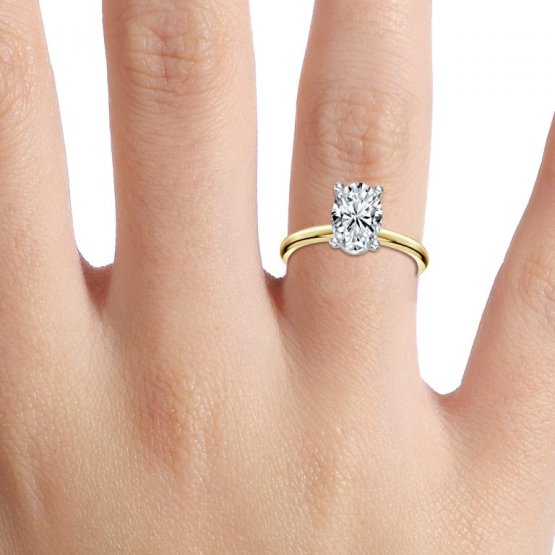In the evolving landscape of extravagance, lab-grown diamonds and lab-created diamonds are emerging as revolutionary alternatives to traditional mined diamonds. These innovative diamonds offer a large group of benefits, from ethical considerations to cost-efficiency, that are reshaping the gems market.
Understanding Lab-Grown Diamonds
Lab-grown diamonds are genuine diamonds that are created in a controlled environment using progressed technological cycles. Unlike normal diamonds that structure more than millions of years under the World’s covering, better lab grown diamonds are created within half a month. There are two primary techniques for creating these diamonds: High Strain High Temperature (HPHT) and Chemical Fume Deposition (CVD).
The HPHT technique mimics the normal conditions under which diamonds structure, using high strain and temperature to crystallize carbon into diamond. CVD, then again, involves the deposition of carbon molecules onto a substrate in a vacuum chamber, where they crystallize into diamond structure. The two strategies produce diamonds that are chemically, physically, and optically identical to regular diamonds.
Benefits of Lab-Grown Diamonds
One of the most compelling benefits of lab-grown diamonds is their ethical sourcing. Traditional diamond mining has been associated with significant environmental harm and human rights issues. Conversely, lab-grown diamonds are created in controlled environments that minimize environmental impact and avoid labor exploitation.
Another benefit is cost-efficiency. Lab-grown diamonds are by and large more reasonable than their normal partners. This is on the grounds that the production cycle for lab-grown diamonds is less labor-intensive and doesn’t involve the extensive mining operations that normal diamonds require. Subsequently, consumers can appreciate high-quality diamonds for a portion of the price.
Customization is likewise a significant benefit. Lab-grown diamonds can be tailored to specific inclinations, including size, shape, and quality. This degree of customization permits purchasers to make unique pieces that are impeccably suited as they would prefer and budgets.
Lab-Created Diamonds: The Science Behind the Radiance
Lab-created diamonds are a subset of lab-grown diamonds, distinguished by their creation cycle. These diamonds are created using similar scientific principles as lab-grown diamonds however may incorporate different techniques and technologies.
The Chemical Fume Deposition (CVD) technique used to make lab-created diamonds involves breaking down carbon-rich gases into carbon iotas, which then deposit onto a diamond seed, forming a diamond precious stone. This cycle considers the creation of diamonds with less impurities and inclusions, resulting in stones of exceptional clarity and brilliance.
Lab-created diamonds offer similar staggering brilliance and durability as regular diamonds. They have similar hardness, making them suitable for various kinds of gems, including wedding bands and fine adornments pieces.
Comparing Lab-Grown Diamonds to Normal Diamonds
While comparing lab-grown diamonds to regular diamonds, it is essential to consider a few variables. Quality is in many cases quite possibly of the most critical perspective. Lab-grown diamonds are virtually indistinguishable from normal diamonds concerning their physical and chemical properties. The two sorts of diamonds are reviewed using similar criteria, including cut, variety, clarity, and carat weight.
Cost is another significant difference. Lab-grown diamonds are typically priced 20-40% lower than regular diamonds of similar quality. This cost difference makes lab-grown diamonds an attractive option for consumers who look for high-quality stones without the premium price tag associated with normal diamonds.
Environmental impact is likewise a crucial consideration. Normal diamond mining can prompt significant ecological harm, including habitat destruction and soil erosion. Interestingly, lab created diamonds have a considerably lower environmental footprint, as they don’t require extensive mining operations.
Ethical Considerations and Transparency
The ethical implications of diamond sourcing have become increasingly important to consumers. Lab-grown diamonds address many of the ethical worries associated with traditional diamond mining. They are created in environments that comply with strict labor standards and environmental regulations.
Transparency is one more key benefit of lab-grown diamonds. The production cycle is highly controlled and reported, providing consumers with clear information about the origins and characteristics of their diamonds. This degree of transparency helps build trust and guarantees that purchasers can go with informed choices.
The Growing Popularity of Lab-Grown Diamonds
The popularity of lab-grown diamonds has been steadily increasing, driven by elements like their ethical and environmental benefits, cost-effectiveness, and the ability to offer a wide scope of customization options. Leading gem dealers and designers are incorporating lab-grown diamonds into their collections, further enhancing their visibility and acknowledgment on the lookout.
Conclusion
As the gems industry continues to develop, lab-grown diamonds and lab-created diamonds are proving to be compelling alternatives to traditional mined diamonds. With their ethical sourcing, cost-efficiency, and customization options, they offer a cutting edge solution for those seeking high-quality diamonds without the associated downsides of regular diamonds.

